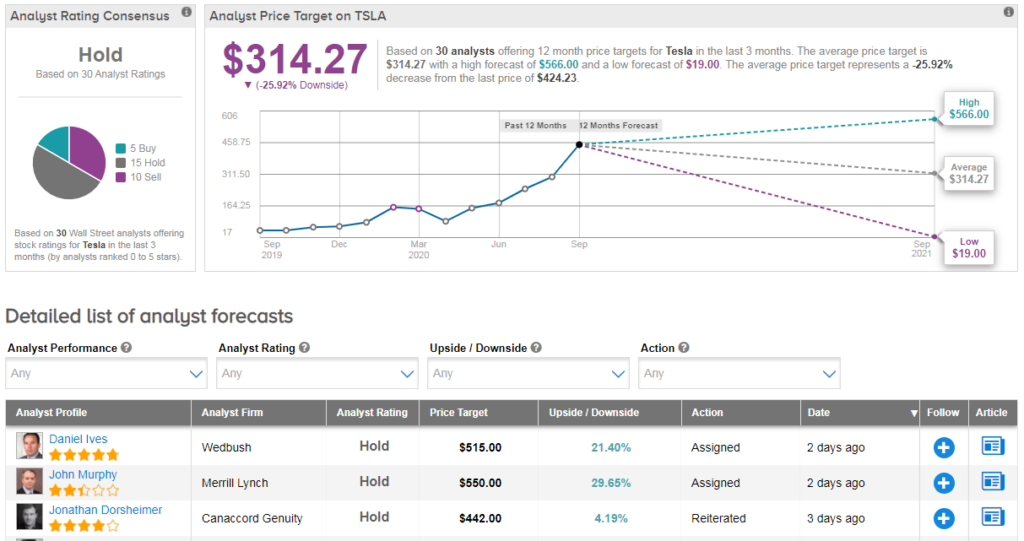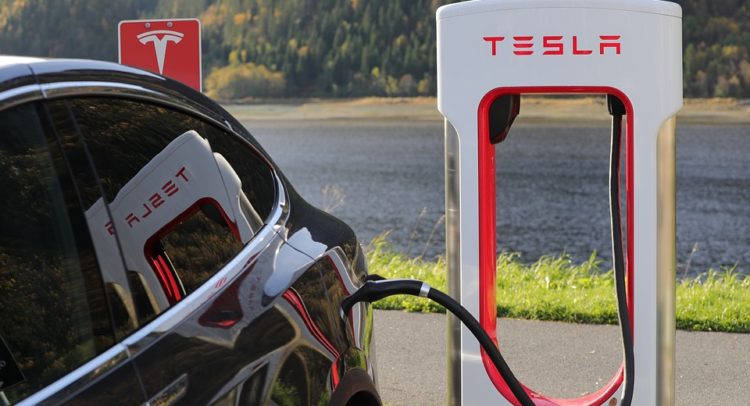Shares in Tesla (TSLA) dropped 7% in Tuesday’s after-hours trading, following a 6% sell-off during the day, after the much-hyped battery day event failed to impress investors.
Key announcements included Tesla indicating that the $/kWh on lithium ion batteries is flattening out and not falling quickly enough to lead to higher adoption of electric vehicles. As a result, Tesla revealed plans to take battery production in-house. Tesla will continue to use cell suppliers including Panasonic and CATL, but aims to have 100 GWh capacity in 2022 and 3 TWh by 2030.
Indeed, looking forward Tesla sees the global need for batteries at 20 TWh, i.e. 135 gigafactories and a $2T investment. To combat the slowing rate of improvement on cost, Tesla unveiled a new battery form factor, new materials, and new manufacturing processes. This is part of its plan to reduce cost by 56%, increase range by 54%, and reduce investment/GWh by 69%.
Meanwhile CEO Elon Musk indicated that every car company will have long-range electric cars. He stated that he thinks Tesla can sell 20mm units/year, which is almost 2x either Toyota or VW, the world’s largest automakers.
For the batteries, Tesla revealed a new cell design, which has 5x energy of the 2170 (also ~5x the volume), and tabless architecture that simplifies manufacturing and can lead to a 14% $/kWh reduction. However a new dry electrode process that uses a high-speed continuous motion process is still in pilot.
Tesla is also intending to use raw silicon for use in anodes (for 5% $/kWh reduction) and says it has secured resources to extract lithium from clay. It will also use high nickel cathode, and reduced cobalt, especially for the Cybertruck and Semi models. Finally it spoke of cell vehicle integration with battery as a dual-use for energy source and vehicle structure (for 7% $/kWh reduction).
However Tesla indicated that it would take 12–18 months to start, and three years to fully realize benefits.
Aside from batteries, the electric vehicle maker indicated 2020 deliveries of 478–515k units, at the midpoint of the previous 500k unit guide. The company also stated that it plans to offer a fully autonomous EV at $25k in three years, and indicated ~600k orders for Cybertruck, at an annual volume of 250–300k.
Following the event, RBC Capital’s Joseph Spak reiterated his sell rating on Tesla with a price target of $290, suggesting significant downside potential from current levels.
“Overall, we believe Tesla’s long-awaited battery day disappointed elevated expectations, as it highlighted some near-term stagnation in the price reduction of current lithium ion batteries; while next-gen battery/ manufacturing technologies and products are ambitious, some are not unique and others could be further out than hoped” he summed up.
However the analyst added that the drop in shares could nonetheless present a buying opportunity, telling investors: “while we still believe TSLA is overvalued, given the interest in the name, weakness could be bought.”
Indeed, Spak’s sell rating is ultimately based on valuation. He argues that the current valuation assumes high growth assumptions and perfect execution on China ramp, Model Y ramp, and future European factory ramp and at a faster pace than he sees as likely. (See Tesla’s stock analysis on TipRanks)
Based on ratings from the last three months, analysts have a Hold consensus on Tesla stock with 5 buy ratings offset by 15 holds, and 10 sells. Meanwhile the average analyst price target of $314 suggests 26% downside potential lies ahead. That’s with shares up over 400% year-to-date.

Related News:
Nikola Sinks 23% As Founder Milton Resigns Amid Short-Seller Debacle
Rolls-Royce Seeks To Raise $2.5B, Including From Singapore’s GIC- Report
Tesla Mulls Setting Up New India Research Center- Report
















